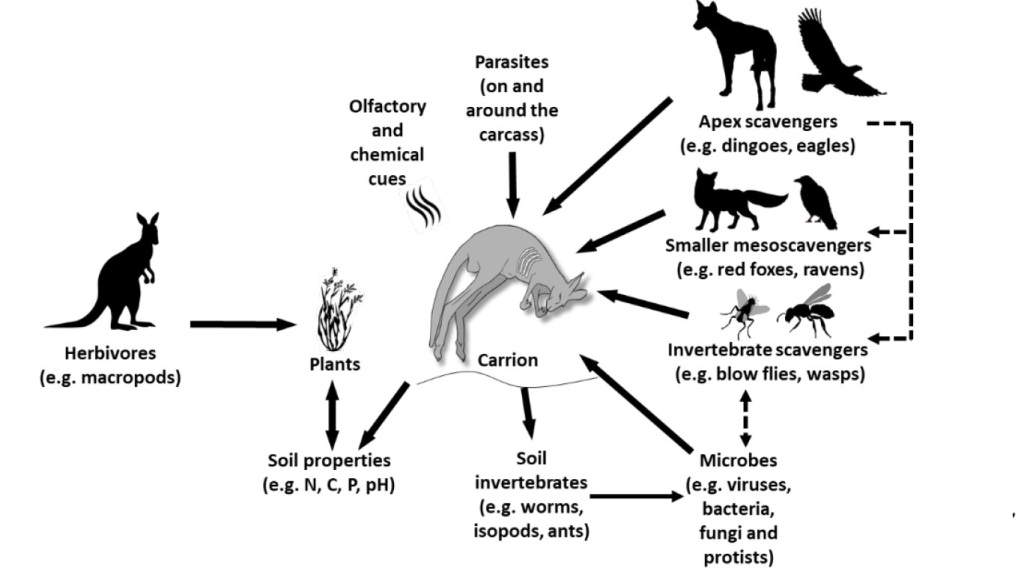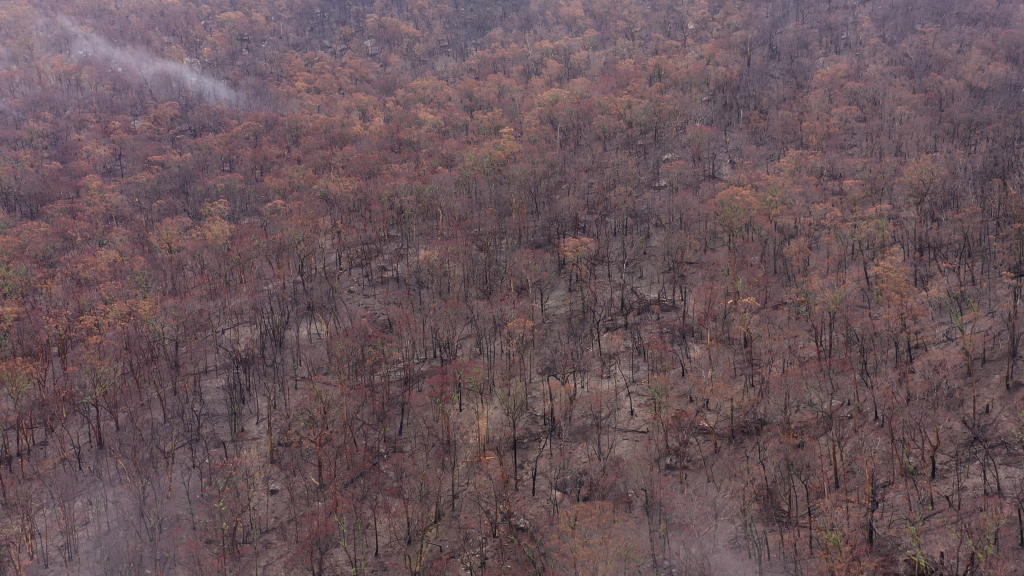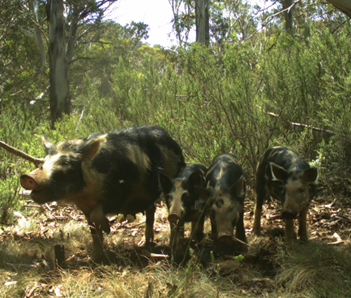In 2018 ProjectOzScav was initiated to investigate the role of carrion in ecological communities in Australia. Specifically, this project:
(1) explores how carrion is used by Australian vertebrates, arthropods and microbes,
(2) determines whether the presence of carrion has cascading impacts on surrounding live prey, and
(3) examines the effects of carrion on soil nutrients and subsequent plant growth surrounding the resource.

The Initial Field Work
PhD student Emma Spencer led the initial field work for ProjectOzScav, and has monitored vertebrate and insect scavengers, and soil and vegetation responses to the presence of 120 kangaroo carcasses across three study systems in Australia, representing temperate (Blue Mountains), subalpine (Kosciuszko National Park) and desert (Simpson Desert) biomes. This work has been supported by the Australian Pacific Science Foundation, Australian Geographic, The NESP Threatened Species Recovery Hub, Bush Heritage Australia, Emirates One&Only Wolgan Valley, The Holsworth Wildlife Endowment, NSW National Parks and Wildlife Service, and the Australian Academy of Science.
Insights from monitoring the carcasses have been featured in SMH, ABC, Newsweek, DailyMail, TheNewDaily, TheNorthWestStar, KatherineTimes, Batemans Bay Post, ABC news, NZHerald and various other news sources. The work led to blog posts featured by Bush Heritage, and the development of ideas to compost carcasses, especially when carcasses are in excess like after the recent bush fires. The research also helped to inform the debate about plans to ease restrictions on feral deer hunting.
Data collected so far has been incorporated into global analyses on the network structure of vertebrate scavenger assemblages, published in the journal Ecography. Observations of European wasps killing flies and stinging dingoes around carcasses were also published in the journal Food Webs, and featured in The Conversation. Emma is currently writing up the rest of her PhD chapters, and we will post updates when the work is published.
Unexpected Extreme Weather
Our carcass monitoring work to date coincided with a few extreme weather events. This included a flooding event in the Simpson Desert in 2019. Honours students Patrick Bragato and Zyna Krige are now analysing whether the behaviour, abundance and/or diversity of vertebrate scavenging assemblages around carcasses shifted as a result of the floods, and whether that in turn influences how long carcasses persist in the environment. The work will be based around monitoring vertebrate scavenger use of 40 kangaroo carcasses before the flood, and 40 carcasses after the flood.
In the Blue Mountains, our study site in the Wolgan Valley was severely burnt during the 2019/2020 bush fire season. We are now starting to assess whether the bush fires have altered scavenging dynamics and ecosystem processes around carcasses in that region. We monitored vertebrate and insect scavenger use of 80 kangaroo carcasses before the fires, and we are in the process of monitoring vertebrate and insect scavenger use of 40 kangaroo carcasses after the fires.

Other Field Research
Much of our current field research is being undertaken in and around Kosciuszko National Park. This research is supported by the Australian Alps Co-operative Management Program, The Hermon Slade Foundation, NSW National Parks, and local land managers. We are also collaborating on projects with the NSW Environment Trust funded Deer Project.
One project in Kosciuszko National Park is being led by PhD student Stefanie Bonat who is evaluating the ecological effects of animal mass mortality events. Stefanie’s project will monitor a suite of ecosystem responses to animal mass mortality events by simulating them in the field (monitoring lots of carcasses), and by studying what happens across the broader landscape after large scale culling events. A key focus will be the responses by scavengers, soil and vegetation to the presence of large numbers of carcasses in the landscape.
The second project in Kosciuszko National Park, led by Masters students James Vandersteen and Chris Fust, is assessing in more detail the impacts of European wasps on scavenging dynamics (building on the work published in Food Webs), how scavenging dynamics changes through different seasons, and also what happens to carcasses when different scavengers are excluded from accessing them. Previous work in Kosciuszko National Park identified that feral pigs are a dominant scavenger. Honours student Molly Kane is now assessing feral pig behaviours around carcasses, and the factors that influence their rates of scavenging.

The Next Steps and Opportunities for Students
As our field work progresses and our results written up, there are plenty of opportunities to join our team either as a volunteer, honours, masters or PhD student.
Some options for lab based volunteer work include (1) scavenging insect ID and sorting, (2) tagging photos of vertebrate scavengers, (3) plant ID’s, and (4) analysis of soil chemistry.
Some options for field based volunteer work include assisting with existing field work in Kosciuszko National Park. We are especially looking for volunteers to assist with field work for the mass mortality project, which will be fully operational in the field from August 2020.
In terms of opportunities for student projects, there is currently scope to add students to the mass mortality project and for the longer term carcass monitoring work we will be conducting in and around Kosciuszko National Park.
We are also looking for students to explore the factors affecting the diversity and abundance of scavenging insect assemblages that we have collected to date, and to explore the longer term impacts of carcasses on insect community assemblages.
For further details about student opportunities, see the Student Opportunities Page.
If you are interested to learn more about ProjectOzScav or whether carcass monitoring might be useful for research, conservation or land management please feel free to contact us directly via the following email: thomas.newsome@sydney.edu.au
Photos and interesting findings can be followed on twitter via #ProjectOzScav
Thanks to all our funders and collaborators who have helped to make all this work to date possible.
